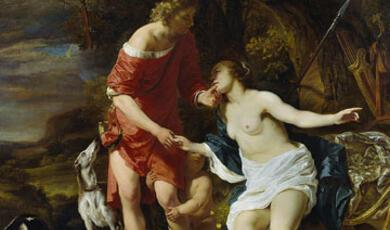6 May 2011
An Introduction to Early Mathematics -
Multi-cultural Mathematics
Robin Wilson
Introduction
In this lecture I’ll attempt to cover the early history of non-Western mathematics – from Egypt and Mesopotamia, China and India. These periods are shown on this time-line.
Ancient Egypt
We start our story with Egypt and Mesopotamia, which areshown on this map. Ancient Egypt developed along the valley of the Nile, while Mesopotamia (as its name suggests) developed between two rivers, the Tigris and the Euphrates. As we’ll see, the surviving primary sources are markedly different. We know relatively little about the Egyptian world, because their writings were on papyrus which rarely survives the ravages of the centuries – only a handful of mathematical papyruses still exist. On the other hand, Mesopotamian mathematics was imprinted on clay tablets that were baked in the sun, and many thousands of them survive. Incidentally, what I call ‘Mesopotamian mathematics’ is often called ‘Babylonian mathematics’ – but that term is now going out of use since no mathematical tablets from Babylon have come down to us.
When studying the mathematics of ancient Egypt, we’re immediately struck with how little the subject changed over a period of 3000 years. Egyptian society was centred around the River Nile, which irrigated the land so that crops could grow and cities could develop. The civilisation was a hierarchical one headed by the mighty kings and pharaohs.
From about 2700 BC the pharaohs desired to be buried in massive pyramids. The oldest of these, King Djoser’s step pyramid at Saqqara, was constructed in horizontal layers and was supposedly designed by Imhotep, the celebrated Grand Vizier and architect.
Better known are the magnificent pyramids of Giza, which date from about 2600 BC and attest to the Egyptians’ extremely accurate measuring skills. In particular, the Great Pyramid of Cheops has a square base whose sides of length 230 metres agree to less than 0.01%. Constructed from over two million blocks, averaging around two tonnes in weight and transported fifty miles by a whole army of workers, the pyramid is an impressive 146 metres high. Even more remarkable, it’s not solid, but contains an intricate arrangement of carefully planned internal chambers and passageways.
Our knowledge of later Egyptian mathematics is scanty, deriving mainly from a small number of fragile primary sources – notably, the Moscow papyrus (c. 1850 BC) and the Rhind papyrus (c. 1650 BC) which is in the British museum. Here’s part of the latter, showing some geometrical problems, with one of them blown up so that you can see the detail. Such problems were used in the training of scribes. As you’ll see, although some of the problems are superficially practical in nature, their main purpose seems to have been educational.
How did the Egyptians count? Like most counting systems, theirs was based on ten, but it used different symbols for one, ten, a hundred, a thousand, and so on: a vertical rod for 1, a heel bone for 10, a coiled rope for 100, a lotus flower for 1000, and so on – recall that Roman numerals similarly use different symbols for 1, 10, 100 and 1000. A number is then represented with the appropriate number of each symbol, written from right to left. Here are 367 and 756 – and we can add them together by collecting the symbols together and replacing each group of ten by the next symbol – for example, ten rods give a heel bone, and ten coiled ropes give a lotus flower.
Multiplication is more interesting, and was done mainly by successive doubling and halving – though multiplication by ten was also simple, since they just replaced each symbol by the next one. Here’s their calculation of 80 times 14, taken from the Rhind papyrus Problem 69. We write 80, and then replace each heel bone by a coiled rope to get 800. We next return to our 80 and double it to get 160, and then 320. If we now add the rows corresponding to 10 and 4, we get the answer, 1120.
Here’s a more complicated problem – it’s number 25 on the Rhind papyrus. A quantity and its half added together become 16. What is the quantity? In modern algebraic terminology, which they didn’t use, we’d be trying to solve the equation x + ½x = 16.
The method that they frequently used was the method of false position, in which they guessed a convenient solution and then scaled it up or down. Here, it’s convenient to try 2, so that the quantity and its half is 3. We now need to scale the 3 up to 16, and the same scaling applied to 2 will then give the answer. Again, doubling is used, as is multiplication by ⅔. The appropriate rows are then singled out, and we obtain the answer, 10⅔. Finally, under the heading of ‘Do it thus’, this solution is checked.
This mention of ⅔ leads us to Egyptian fractions, which are very different from those that we use. Apart from ⅔, all their fractions were unit fractions, or reciprocals 1/n. So, for example, where we’d write 2/11 they’d write 1/6 1/66, and where we’d write 2/13 they’d write 1/8 1/52 1/104. Their ability to calculate with these unit fractions can be seen from Problem 31 of the Rhind papyrus. A quantity, its ⅔, its ½, and its 1/7, added together become 33. What is the quantity? In our algebraic notation, this problem requires us to solve the equation x + ⅔x + ½x + 1/7x = 33. Their answer, which we’d write as 1428/97, is 14 ¼ 1/56 1/97 1/194 1/388 1/679 1/776 – an impressive feat of calculation.
How did they do it? They used extensive tables of numbers, breaking the fraction down to a succession of fractions of the form 2/n, and then combining these repeatedly. To this end, the Rhind papyrus starts with a table of fractions of the form 2/n, for all the odd numbers n from 5 up to 101.
A rather different type of problem involves the area of a circle. Problem 48 asked the scribe to compare the areas of a circle and its circumscribing square. Choosing the diameter of the circle and the side of the square to be 9, the area of the square was obtained by comparing 1 with 9 setat (the unit of measurement), 2 with 18 setat, 4 with 36 setat, and 8 with 72 setat, and then adding the rows corresponding to 1 and 8 (which add to 9) to yield 81 setat. For the circle, the papyrus starts by comparing 1 with 8 setat and proceeding as before, giving an answer of 64 setat.
The reason for starting with 8 for the circle is that the Egyptians found the area of a circle as follows: if the side of the square is d, then their approximation for the area is (d – d/9)2 = 8/9d2 – this is why they chose an initial diameter of 9. In terms of the radius the area is 256/81r2, which corresponds to a value of π of about 3.16, an excellent approximation for almost 4000 years ago.
Mesopotamian mathematics
Let’s now turn our attention to Mesopotamian mathematics. Although dating from the same time as the Rhind papyrus, the tablets we’ll look at are very different in content. Using a wedge-shaped stylus, the symbols were imprinted in the moist clay – this is called cuneiform writing – and the tablet was then left to dry in the sun. Unlike the Egyptian counting system, a decimal system with different symbols representing the powers of 10, the Mesopotamian system was a place-value sexagesimal system (that is, based on 60) that used only two symbols – remnants of it survive in our measurement of time (60 seconds in a minute, 60 minutes in an hour) and of angle. However, there were ambiguities: the same succession of symbols may refer to any of 60 + 2, or 602 + (2 × 60), or 1 + 2/60, depending on the context. This idea of context is quite natural for us: 6-50 might represent time (ten to seven), or the cost of a bus trip to Cambridge (£6.50), or the cost of a flight to Singapore (£650).
There are essentially two types of mathematical tablet – table texts, listing tables of numbers that are used in calculations, and problem texts, in which problems are posed and solved. Several table texts present multiplication tables: here are the nine-times table and the five-times table.
An example of a problem from a problem text is this one. I found a stone, but did not weigh it; after I weighed out 6 times its weight, added 2 gin (a unit of weight),and added one-third of one-seventh multiplied by 24, I weighed it: 1 ma-na (another unit of weight).What was the weight of the stone? This problem is clearly not a practical one – if we want the weight of the stone, why don’t we just weigh it? It is just one of 22 such problems, all on the same tablet and all ending up with 1 ma-na, which leads us to believe that the tablet is a teaching tablet. Given that 1 ma-na equals 60 gin, we argue as follows, using modern algebraic notation:
if x is the weight of the stone, then
(6x + 2) + 1/3 . 1/7 . 24 (6x + 2) = 60 gin, so x = 41/3 gin.
Note that we take one-third of one-seventh times 24 not of x, but of 6x + 2, the stage we’ve just reached in the calculation.
The next problem text is more complicated. I have subtracted the side of my square from the area: 14,30. You write down 1, the coefficient. You break off half of 1. 0;30 and 0;30 you multiply. You add 0;15 to 14,30. Result 14,30;15. This is the square of 29;30. You add 0;30, which you multiplied, to 29;30. Result: 30, the side of the square. Again, this is not a practical problem – we cannot subtract the side of a square from the area. Putting it into modern algebraic notation, we have x2 – x = 870, and the sequence of steps gives us successively: 1, ½, (½)2 = ¼, 870¼, 29½, 30. It turns out that if we carry out the same operations on the general equation x2 – bx = c, we get the same result as we’d get nowadays from the quadratic equation formula. Thus, the Mesopotamians knew how to solve quadratic equations 4000 years ago, using essentially the same method that we use today.
A particularly unusual tablet shows a square with its two diagonals, and the numbers 30, 1;24,51,10 and 42;25,35. It turns out that these refer to the side of the square (30), the square root of 2, and the length of the diagonal (30√2). The amazing accuracy of the square root 1:24,51,10 becomes apparent if we square it – we get 1; 59,59,59,38,1,40, which differs from 2 by a minute fraction.
India and China
We now look at the mathematics of China and India. Around 250 BC in India, King Ashoka’s edicts were written on various pillars around the kingdom, and numerical information appeared on these pillars. It was written in a place system based on 10, and seems to have been the origin of what we now call the Hindu–Arabic numerals, with their separate columns for units, tens, hundreds, and so on.
The Chinese had a similar scheme with their counting boards, in which there were separate compartments for units, tens, hundreds, and so on – here are 6736 and 2101 (as we now write them). There are only nine different symbols (1 to 9), although each has two forms (horizontal and vertical) so that the calculator could distinguish more easily between adjacent compartments – so these 1s are the same, whereas these 6s are different. In this context it would be natural to introduce a zero symbol for an empty box – though the Chinese didn’t do so.
The Indians did, however. Whether they were familiar with Chinese counting boards is unknown, though the Chinese visited India and the boards were transportable (like lap-tops), so it is quite possible. In any case, the Indian number system developed as a place-value system based on 10, using only the numbers 1 to 9 (unlike the Egyptian and Greek systems), and eventually (possibly around 400 AD) including also the number 0.
China
I’d now like to look at the mathematical activities of China and India in more detail, although primary source material is very sketchy. In particular, the Chinese wrote on bamboo, and on paper, which do not survive the centuries.
There is an ancient Chinese legend about the Emperor Yu standing on the banks of the river Lo (a tributary of the Yellow river), when a tortoise emerged from the river with a pattern of numbers on its back – in fact, a 3 × 3 magic square, in which the sum of the numbers in each row, each column, and the two diagonals, were all the same: 4 + 9 + 2 = 15, 2 + 5 + 8 = 15, and so on. Over the centuries this particular pattern of numbers came to acquire great religious and mystic significance, and appeared in many different forms, as you can see. Although Emperor Yu lived around 2000 BC, there is no evidence of the story until much later – possibly as late as the Han dynasty, which started in 206 BC.
It was also possibly around this time that two classic Chinese texts appeared. The first was the Zhou-bei suanjing (The arithmetical classic of the gnomon and the circular paths of Heaven), which contained a celebrated dissection proof of Pythagoras’s theorem: if we draw the square on the hypotenuse and then move two triangles in the figure, we get the sum of the squares on the other two sides.
Another classic Chinese problem type of the time, which can be solved using Pythagoras’s theorem, are problems of broken bamboos. For example, there is a bamboo 10 feet high, the upper end of which being broken reaches the ground 3 feet from the stem. Find the height of the break. In modern algebraic notation, which the Chinese didn’t have, we can call the answer x and the rest of the bamboo y, so that x + y = 10 and (by Pythagoras’s theorem) x2 + 32 = y2. Solving these equations then gives the result.
This particular bamboo problem appeared in the other great early text, the Jiuzhang suanshu, or Nine chapters on the mathematical art. This remarkable work contains 246 questions with answers but with no working shown, and may have been used as a textbook. It deals with both practical and theoretical matters – for example, there are problems from agriculture, business, surveying and engineering, and discussions of the areas and volumes of various geometrical shapes, the calculation of square roots and cube roots, the study of right-angled triangles, and the solution of simultaneous equations.
This last area in particular is very remarkable. Here’s an example. There are three types of grain, good, moderate and poor. 3 bundles of good grain, 2 bundles of moderate grain, and 1 bundle of poor grain take up 39 measures; 2 bundles of good grain, 3 bundles of moderate grain, and 1 bundle of poor grain take up 34 measures; 1 bundles of good grain, 2 bundles of moderate grain, and 3 bundle of poor grain take up 26 measures. How many of each type are there?
These days we’d write down three simultaneous equations – and this is what is done here, except that they’re written in a table from left to right and vertically. We’d then manipulate the equations, using what we now call ‘Gaussian elimination’ – and that’s exactly what’s done here with the table, eventually yielding these three equations. The first gives C= 2¾, and substituting back gives B= 4¼ and A= 9¼. The Chinese method is exactly the same as the one that Gauss gave some 2000 years later, except that Gauss was the one that now gets the credit.
Another preoccupation of the Chinese was the evaluation of π, the ratio of the circumference of a circle to its diameter. We have already seen how the Egyptians tackled this problem, obtaining an answer better than the usual one of 3 that appears in the Bible. Archimedes compared the perimeters of polygons drawn inside and outside the circle, starting with a hexagon and successively doubling the number of sides to 12, 24, 48, and then 96, giving the lower estimate 310/71 and the upper estimate 31/7.
In his Classic of the island in the sunof around 263 AD, Liu Hui carried on this process, doubling up to polygons with 3072 sides and obtaining the value π = 3.14159 in our decimal notation. Even more impressive, around 500 AD Zu Zhongzhi and his son extended this to polygons with 24,576 sides, thereby obtaining π to six decimal places. They also replaced the crude estimate 22/7 by the much better one 355/113, which gives π to six decimal places: this approximation wasn’t rediscovered in Europe until 1000 years later. Further improvement didn’t come until around 1400, in the Islamic world.
India
We’ll now look at Indian mathematics, concentrating in particular on three mathematicians Aryabhata the elder, Brahmagupta and Bhaskara. A Diophantine equation is one where we are interested in finding whole number solutions to equations, and Aryabhata gave the first systematic treatment of these, around 500 AD. He was also interested in trigonometry, and constructed tables of the sine function. Brahmagupta (probably the greatest of the three) discussed the idea of zero as a number to calculate with, showed how to solve quadratic equations (essentially the Mesopotamian way), and looked at a particular type of equation now called ‘Pell’s equation’. Bhaskara, much later, wrote a famous arithmetic book, called Lilavati, in which he showed how to simplify certain numbers involving square roots. In particular he gave a formula that can be used to show that the square root of (17 + √240) is equal to √12 + √5.
One of Aryabhata’s main contributions was to sum various arithmetic series. For example, if we look at an arithmetic progression such as 5 + 7 + 9 + … + 31 or 10 + 13 + 16 + … + 100, we can find the sum of all the numbers in it: according to Aryabhata, The desired number of terms, minus one, halved, multiplied by the common difference between the terms, plus the first term, is the middle term. This multiplied by the number of terms desired is the sum of the desired number of terms. Or the sum of the first and last terms is multiplied by half the number of terms. These give the expressions we use now:
sum = n{1/2(n– 1)d+ a} = n/2 {a+ (a+ (n– 1)d}.
In the 7th century Brahmagupta gave rules for calculating with zero (or cipher) and positive or negative numbers: The sum of cipher and negative is negative; of positive and nought, positive; of two ciphers, cipher. Negative taken from cipher becomes positive, and positive from cipher is negative; cipher taken from cipher is nought. The product of cipher and positive, or of cipher and negative, is nought; of two ciphers is cipher. He then gets very confused: Cipher divided by cipher is nought. Positive or negative divided by cipher is a fraction with that as denominator.It would be many centuries before mathematicians really understood the problems caused by dividing by zero.
Both Brahmagupta and Bhaskara worked extensively on a particular equation, now known as Pell’s equation – an incorrect assignation by Euler. This equation has the form Cx2+ 1 = y2, and we are required to find whole number solutions for a given value of C. Bhaskara asked: Tell me, O mathematician, what is that square which multiplied by 8 becomes – together with unity – a square. Here, 8x2+ 1 = y2, which has the easy solution x= 1, y= 3. This can then be used to find other solutions, such as x= 6 (so 8x2= 288), giving y= 17.
The hardest examples they came across were C= 61 and C= 67, but they still managed to find solutions: for C= 67, the simplest solution is x= 5967 and y= 48,842.
Before leaving India, I’d like to mention some early work on permutations and combinations – the area of mathematics we now call combinatorics. In a 6th-century BC medical treatise, Sushruta was investigating the number of ways of systematically combining six tastes – sweet, acid, saline, pungent, bitter and astringent – and found that two of them can be chosen in 15 ways, three can be chosen in 20 ways, and so on. Around 300 BC, the Jainas similarly studied combinations of five senses, and of men, women and eunuchs, and around 200 BC, Pingala investigated combinations of short and long syllables in a metrical poem.
Much more substantial was the work of Varahamihira, around 550 AD, who desired to find the number of perfumes that could be made from 4 ingredients chosen from 16. He gave the correct answer of 1820.
Although Indian mathematicians were skilled in dealing with permutations and combinations, they never constructed what we now call ‘Pascal’s triangle’, which lists these numbers – we call them binomial coefficients, because they arise when we multiply out the binomial expression (a+ b)n. Here’s a Chinese ‘Pascal’s triangle’ from the 1303 treatise Precious mirror of the four elements, by Zhu Shijie. The earliest Pascal triangle I know dates from around 1000 – an Islamic one of al-Karaji – 650 years before Pascal.
© Professor Robin Wilson, 2011


 Login
Login







